ESHG Young Investigator Awards
The ESHG awards prizes of EUR 500.- for outstanding research by young scientists presented as a spoken contribution at the conference. All young scientists submitting spoken presentations were encouraged to apply. The nominee is the first author (i.e. presenting author) of the presented abstract, pre- or post-doctoral (not more than 4 years after PhD).
Awards are given in the following catergories:
- ESHG Young Investigator Awards for Outstanding Science
- Isabelle Oberlé Award for Research on Genetics of Mental Retardation
- Lodewijk Sandkuijl Award for the best talk in Statistical Genetics
- Vienna Medical Academy Award for the best talk in Translational Medicine
- Mia Neri Award for the best talk in Cerebral Cancer Research
We have asked the candidates to answer the following questions:
Q1: Date and city of birth
Q2: What is your current position?
Q3: Why did you choose a career in genetics?
Q4: What is so interesting about the research you are presenting at ESHG 2015?
Candidates for Young Investigator Awards
Cambridge, United Kingdom Talk: C09.5 Tumour risks and genotype-phenotype-proteotype analysis in ~800 patients with germline mutations in the succinate dehydrogenase subunit genes SDHB, SDHC and SDHD Session: C09 Genetic susceptibility to cancer development Date: Sunday, June 7, 2015, 13:30 hrs Q1: 27/11/1988, Guildford, UK Q2: Academic foundation doctor, Cambridge University Hospitals NHS Foundation Trust Q3: I have chosen to apply for a career in clinical genetics because I enjoy the challenge of communicating risk and uncertainty, diagnosing rare disorders and constantly adapting my practice as new technologies come into play. Q4: In a large cohort of mutation positive patients with paraganglioma/phaeochromocytoma, we are able to show how different mutations within different proteins of the same succinate dehydrogenase enzyme complex can result in dramatically different phenotypes. This will be important not only for genetic counselling, but also for designing tailored screening protocols. |
Zurich-Schlieren, Switzerland Talk: C15.6 Clinical and experimental evidence establish a link between KIF7 and C5orf42-related ciliopathies Session: C15 Network and functional analysis in intellectual disability Date: Monday, June 8, 2015, 13:30 hrs Q1: Yazd, Iran Q2: MD-PhD, Postdoctoral Fellow Q3: My primary entry into genetics goes back to my MD thesis which was about polymorphisms of IL10 gene and risk of breast cancer. Later, I was very fortunate to have the opportunity to continue my studies in the field of medical genetics with the support of my inspiring mentor, Anita Rauch. Now that genetics/genomics is revolutionizing the entire field of medicine for precise risk assessment, personalized diagnostics and targeted treatment, I am more than sure that I am on the right track. Q4: By combining the clinical presentation of patients, whole exome or targeted sequencing results and experimental data from chicken embryos, we established the link between KIF7 and C5orf42-related ciliopathies. We evidenced, for the first time, the role of C5orf42 in craniofacial development, pathfinding of commissural axons and neural circuit formation. | |
Emma Baple Southampton, United Kingdom Talk: C23.4 Homozygous truncating mutations in WDR73 cause a severe nephrocerebellar syndrome, part of the Galloway Mowat syndrome spectrum Session: C23 Movement and motor disorders Date: Tuesday, June 9, 2015, 11:00 hrs |
Rotterdam, Netherlands Talk: C17.1 RNF12 is essential for X-inactivation in female mouse embryonic stem cells, is required for female mouse development, and might be a target for future therapies to treat X-linked disorders in females: evidence from a mouse knockout model Session: C17 Epigenetic control of gene expression Date: Monday, June 8, 2015, 13:30 hrs Q1: 25/05/1984, Meerbusch, Germany Q2: At present, I am a postdoctoral research fellow at the University of Edinburgh, in the MRC Centre for Regenerative Medicine. Here I try to understand how embryonic stem cells maintain their self-renewal and differentiation capacity. At a long term, insights in the mechanisms regulating this pluripotency might help in developing methods to alter cell fate, and might help to develop novel stem cell based therapies. Q3: During my Medical Studies in Rotterdam, The Netherlands, I noticed that I am very fascinated by mechanisms underlying disease. In particular genetic mechanisms underlying inherited disorder always attracted my attention. Especially being fascinated by the X chromosome inactivation process and the many influences this process can have on disease phenotypes in females, I embarked on a Ph.D. project which aimed to understand the regulation of this important epigenetic process. At the long term, I plan to train as a clinical geneticist, and combine clinical related work with my research, trying to develop novel stem cell based therapies for inherited disorders. Q4: My research has contributed to a better understanding of the regulation of the initiation of the female specific X chromosome inactivation (XCI) process. In particular, I identified the E3 ubiquitin ligase RNF12 (RLIM) as a crucial activator of the XCI process which functions by degrading the embryonic stem cell pluripotency factor REX1, thereby providing evidence for a direct link between regulation of XCI and the pluripotency network in embryonic stem cells. To test the role of RNF12 in vivo, I have created a novel RNF12 knockout mouse model. This model emphasizes the importance of RNF12 in the regulation of XCI, as homozygous RNF12 deficient female mice are lethal due to absence of XCI initiation. Surprisingly, in Rnf12+/- female mice, which are healthy, we found evidence for a lack of XCI in many different cell types in vivo. Hence, these peculiar female mice are one of the first examples of placental mammals with a lack of XCI, and bi-allelic X-linked gene expression. Since these animals do not have an obvious disease phenotype, it might now be possible to develop X chromosome reactivation methods to diminish the disease phenotype of females suffering from X-linked disorders due to unfavorable skewing of XCI and inactivation of the wild type X chromosome. These X reactivation methods, combined with stem cell based therapies, might become a new future treatment modality for X-linked disorders. | |
Manchester, United Kingdom Talk: C11.4 Spondyloenchondrodysplasia: The expanding phenotype of TRAP deficiency Session: C11 Skeletal disorders Date: Sunday, June 7, 2015, 13:30 hrs Q1: Halifax, UK. 18-06-77 Q2: I am an NIHR Academic Clinical Lecturer at The University of Manchester, UK. My time is split 50:50 between my laboratory-based research, which focuses particularly on immunogenetics, and my clinical training at The Manchester Centre for Genomics Medicine, St Mary’s Hospital. Q3: I have always found genetics fascinating. I am particularly passionate about the opportunity to combine clinical genetic medicine and research. I love the challenge of testing hypotheses and investigating new questions. When the answers have the potential to translate directly to my patients, and those of my colleagues, I find this very rewarding. Q4: I have been working on Spondyloenchondrodysplasia for the past eight years. During this period we have identified the causative gene and moved towards understanding the functional biology. I will present data which demonstrate the highly pleiotropic nature of the condition, including an absence of immune disease in some gene positive cases. I will show that, whilst most cases demonstrate elevated interferon-stimulated gene expression, this is not universal, and patients with normal levels may provide a clue towards effective therapy. |
Leuven, Belgium Talk: C01.5 Incidental findings of genome wide non-invasive fetal aneuploidy detection (NIPT): presymptomatic identification of maternal cancers Session: C01 NIPT Date: Saturday, June 6, 2015, 18:30 hrs Q1: July 6, 1983, Kortrijk, Belgium Q2: I’m a postdoc in the Centre for Human Genetics, Leuven (Belgium). I’m responsible for the diagnostic NIPT workflow in the Clinical Cytogenetics lab. Q3: How can even the smallest change in DNA sequence or copy number cause disease in one person, and have almost no phenotypic effect in another? How can we accurately predict phenotypic outcome in newborns or at later stages in life? Finding clues using pre/postnatal testing on the edge of research and routine diagnostics is the challenge I am eager to pursue. The answers we can give using novel techniques in the rapidly evolving field of Clinical Genetics can make a huge difference, not only for Science, but for a person’s quality of life, for a couple, for a whole family. Q4: The presence of cell-free fetal DNA in the maternal circulation has allowed for the development of different methods for non-invasive detection of fetal chromosomal imbalances. Non-invasive prenatal testing (NIPT) thus avoids miscarriages cause by invasive sampling of fetal material. We developed and validated an innovative, fast, cost efficient workflow and high throughput analysis pipeline for NIPT. This optimized genome-wide analysis pipeline overcomes some of the technical and biological causes of false positive or false negative results which resulted in very high sensitivities and specificities for trisomy 21, 18 and 13 detection in over 6000 pregnancies. Moreover, it seems to create opportunities to detect other chromosomal abnormalities in addition to the traditional trisomies, among which other (partial) fetal aneuploidies, clinically relevant maternal incidental findings and even presymptomatic cancer in some pregnant women… | |
Rotterdam, Netherlands Talk: C20.6 What’s in it for me? A critical analysis of the notion of personal utility in genomic testing Session: C20 Current issues in genet(h)ics Date: Tuesday, June 9, 2015, 11:00 hrs Q1: Leidschendam, 14 October 1982 Q2: post-doc researcher Q3: Genetics is a fast-moving field, which confronts citizens, patients and physicians with ever-evolving ethical challenges, which must be handled proactively and constructively. I can put my training in philosophy and ethics to use in genetics, and thus contribute to responsible innovation in genetics-based medicine and technology. Q4: I will critically address the often-used but rarely studied notion of personal utility. When is a genomic test personally useful? Clearly defined, the notion of personal utility can be a great tool to distinguish meaningful from meaningless tests, to justify a liberal but responsible genomic testing offer, and to help ensure the progress of genetics research and technology. |
Valencia, Spain Talk: C06.5 Junctophilin-1 expression levels could modify the effects of GDAP1 mutations in Charcot-Marie-Tooth disease Session: C06 Neuromuscular disorders Date: Saturday, June 6, 2015, 18:30 hrs Q1: February 1986, Alicante (Spain) Q2: PhD student in the the Program in Rare and Genetic Diseases at Centro de Investigación Príncipe Felipe (CIPF) in Valencia (Spain). Q3: Rare disease awakened my interest for human genetics. An exciting field is not only to discover new genes involved in Mendelian genetic disorders but also to identify genetic factors that may modulate the disease phenotype to explain the variable clinical expression. In fact, I really believe that characterization of genetic modifiers is the key to discover important pathways for new therapies. Q4: We have recently described the JPH1 gene as a genetic modifier in Charcot-Marie-Tooth (CMT) disease, one of the most common inherited neurological disorders. In this work we have identified new variants in the JPH1 gene which affect its expression and that could modify the effects of GDAP1 mutations in CMT disease. We have used Drosophila models to demonstrate how altered junctophilin expression levels modify the effects of Gdap1-related neural degeneration. Moreover, the Drosophila model has allowed us to discover new pathways related to junctophilin. | |
Valencia, Spain Talk: C06.4 Analysis of the Gdap1 knockout mice reveals calcium homeostasis and mitochondrial dynamics defects in the Charcot-Marie-Tooth disease pathogenesis Session: C06 Neuromuscular disorders Date: Saturday, June 6, 2015, 18:30 hrs Q1: 22 February, 1988 Q2: I am a second year PhD student in Genetics and Molecular Medicine. My research work isfocused on the genetics, genomics and pathophysiology of Charcot-Marie-Tooth Q3: I have always been fascinated by the Human Genetics research. The understanding how the genes function and how they affect human health, helps identify diseases and develop Q4: To improve the diagnosis and finding therapeutic targets it is crucial tounderstand the mechanisms of the disease at cellular and molecular levels. Indeed, we were able to generated a Gdap1 knockout mouse-related Charcot-Marie-Tooth neuropathy. Detailed characterization of the generated in vivo model allowed us to propose a pathogenic mechanism of the disease that involves depletion of cellular calcium associated with changes in the mitochondrial network. |
Angers, France Talk: C16.3 Loss-of-Function Mutations in WDR73 Are Responsible for Microcephaly and Steroid-Resistant Nephrotic Syndrome: Galloway-Mowat Syndrome Session: C16 Growth failure and microcephaly Date: Monday, June 8, 2015, 13:30 hrs Q1: 22/08/1979, Brest, France Q2: Currently I am working as clinical geneticist and PhD student at the University Hospital of Angers, France (UMR INSERM 1083 – CNRS 6214). Q3: Everything is a matter of meeting. Initially I am a pediatrician and during my training I met the team in which I currently work. The whole team showed me the importance of the links between the clinic and the laboratory. The considerations that may exist between phenotype and genotype or the arrival of new technology which allows a better understanding of pathological mechanisms. The practice of clinical genetics also request an important dialogue with patients and their families that challenges perpetually our practice. Q4: We have shown that WDR73 is the first gene involved in Galloway-Mowat syndrome. And our work underlines the critical function of WDR73, which was yet an unknown gene, in both neurons and podocytes via an important role in neuronal cell survival and an involvement in the organization of microtubule networks. Also this research should allow a genetic counseling for all the concerned families with this rare and severe disease. | |
Laurence Colleaux Paris, France Talk: C10.2 Identification of a common set of microRNAs deregulated in Autism Spectrum disorders Session: C10 Neurogenetic disorders Date: Sunday, June 7, 2015, 13:30 hrs |
Rome, Italy Talk: C21.5 Mutations in transcription factor ZBTB20 cause tall stature, macrocephaly, cognitive deficits, diabetes, progressive muscle wasting and deafness Session: C21 Multiple congenital anomaly syndromes Date: Tuesday, June 9, 2015, 11:00 hrs Q1: 28-06-1974 Sassari Q2: I am in-staff molecular biologist at the Department of Hematology Oncology and Molecular Medicine, Italian National Health Institute, Rome, Italy. Q3: I have been fascinated with the molecular mechanisms involved in human disease since my first studies at the University. Medical genetics was my natural choice for my scientific track. Q4: Beside the identification of a new disease gene implicated in a human developmental disorder, the Primrose syndrome, this discovery provide a fascinating evidence of the diverse clinical impact of mutations affecting different domain in the same protein and differentially affect protein stability and function. | |
Utrecht, Netherlands Talk: C20.4 Informed consent for whole exome sequencing in pediatric disease diagnostics: parental decision-making processes, their ethical relevance and implications for policy development Session: C20 Current issues in genet(h)ics Date: Tuesday, June 9, 2015, 11:00 hrs Q1: 23-11-1984, Washington, D.C., U.S.A. Q2: PhD candidate at University Medical Center Utrecht and the Ethics Institute of Utrecht University in the Netherlands. Q3: As an ethicist in training, what drew me to genetics are all the interesting moral questions that accompany scientific development and technological innovation within the field. For example, those regarding novel sequencing technologies: How can we safeguard persons’ well-informed decision-making for these techniques? What should return of results policies for unsolicited findings look like? Q4: My research shows how important the context-specific factors of persons’ situations are for understanding why parents make certain (disclosure) decisions concerning clinical sequencing for their child. In turn, understanding the different kinds of context-specific factors that can play a role in decision making helps us sharpen our answers to moral questions of policy development for using these techniques. |
Leuven, Belgium Talk: C16.6 From whole exome sequencing to functional studies in syndromic microcephaly: using zebrafish for variant testing Session: C16 Growth failure and microcephaly Date: Monday, June 8, 2015, 13:30 hrs Q1: 07/07/1987 San Daniele del Friuli (Italy) Q2: PhD candidate student at the Laboratory for Cytogenetics and Genome Research, Departmet of Human Genetics, KU Leuven, Belgium Q3: My interest in genetics dates back to middle school, I was already very fascinated by DNA and chromosomes, a perfect combination of beautiful structure and rational replication - translation mechanisms which are the foundation of living organisms. My curiosity and passion for human genetics in particular was instilled by a former University cytogenetics professor who made me realize the importance of understanding more in depth the mechanisms underlying genetic disorders in order to concretely help people. Q4: Although the genetic causes of an increasing number of disorders encompassing microcephaly have been identified, a great number of still unexplained syndromes exist. The research I am presenting at ESHG is interesting first of all because we display the results we obtained by whole exome sequencing on a cohort of patients presenting sporadic syndromic forms of microcephaly. Secondly, since variant interpretation is always challenging when analyzing WES data, we also present data obtained using the zebrafish model to define pathogenicity of some of the candidate variants identified. | |
Utrecht, Netherlands Talk: C13.6 Chromothripsis in healthy individuals affects multiple protein-coding genes and can result in severe congenital abnormalities in offspring Session: C13 Fundamental insights in structural genomics Date: Monday, June 8, 2015, 13:30 hrs Q1: 18-12-1982 Vlissingen (Netherlands) Q2: PhD student Q3: Ever since I first learned about genetics, it’s importance and impact it has interested me. Even though we’ve learned so much over the last decades, there is always more to be discovered. What inspires me is providing families with genetic answers to ‘what and how’ while potentially facilitating treatment options/development as well. Q4: Chromothripsis has devastating effects on chromosomal architecture and has been linked to cancer and congenital defects. We have identified copy number balanced chromothripsis in healthy females. In all cases, this directly impacted reproduction. The occurrence of balanced chromothripsis in healthy individuals may remain undetected by frequently used diagnostic tools and can have direct clinical implications. |
Hinxton, Cambridge, United Kingdom Talk: C03.4 De novo mutations in BCL11A cause developmental delay: additional implications of the BAF SWI/SNF complex in intellectual disability and autism Session: C03 Novel genes causing intellectual disability Date: Saturday, June 6, 2015, 18:30 hrs Q1: 14/07/1975, Toronto, Canada Q2: Fellow of the Wellcome Trust PhD Programme for Clinicians (Wellcome Trust Sanger Institute and University of Cambridge) Q3: Early in my medical training I learned significant numbers of children with chronic and/or debilitating disorders have a rare disease of genetic aetiology. Understanding the underlying pathophysiology of rare disease contributes to the well-being of patients and provides valuable insight into common disease. I am committed to integrating scientific research into the multidisciplinary approach to clinical care, contributing to the goal of aiding the establishment of long-term prognosis and therapy for rare disease. Q4: BCL11A has been extensively studied for its roles in malignancies and hematopoiesis. We are just beginning to discover how important it is in neurodevelopment, through the identification of patients with intellectual disability and autism with mutations in BCL11A. In modeling biological processes and behavior in mammalian models, we are increasing our understanding of patients, also our overall understanding of neurodevelopment and cognition. | |
Leuven, Belgium Talk: C13.5 High incidence of mosaic chromosomal aneuploidies in human cell lines: a quantification of the frequency of the phenomenon Session: C13 Fundamental insights in structural genomics Date: Monday, June 8, 2015, 13:30 hrs Q1: 22/02/1983, Thessaloniki, Greece Q2: Postdoctoral Researcher in the Centre for Human Genetics, Laboratory for Cytogenetics and Genome Research, KU Leuven, Belgium Q3: During my late high-school years already I was fascinated by human chromosomes. Later, as a student in Applied Biology and Biotechnology, I got even more curious to understand how their function and structure can be linked to human disease, which led me to choose for a carrier in Human Genetics. Today, the mysterious nature of chromosomes still intrigue me and unravelling the causes and mechanisms underlying chromosomal instability as well as understanding the possible consequences of such events on human health has become my everyday life. Q4: Whereas chromosome segregation is thought to occur with high fidelity, our study shows that large segmental chromosomal imbalances occur in fibroblast- and EBV-cell lines, with a frequency 100-400 times higher than thus far estimated. The analysis of the both daughter cells following a single cell division together the implementation of haplarithmisis, a novel concept that enables very accurate concurrent haplotyping and copy-number profiling in unprecedented detail at the single-cell resolution and in a genome-wide fashion, result in high-confidence characterization of the imbalances. Our findings have important practical and theoretical consequences: they put in question the efficacy of the DNA repair mechanisms and control checkpoints and imply that the detected imbalances may underlie the first steps towards cancer progression. |
Manchester, United Kingdom Talk: C19.6 Whole genome sequencing as a clinical diagnostic tool for heterogeneous Mendelian disease Session: C19 Diagnostic NGS Date: Tuesday, June 9, 2015, 11:00 hrs Q1: 16/08/1990, Chester, UK Q2: I am a 2nd year PhD student at the University of Manchester. I am completing my PhD in Genetic Medicine and Clinical Bioinformatics at the Manchester Centre for Genomic Medicine, a collaboration between the University of Manchester and the Central Manchester NHS Foundation Trust. Q3: I knew that a research career in human genetics would be a fast-paced, challenging, competitive, and as a result an extremely exciting area of medical research, but it is the real-life and everyday application of clinical genetics that has inspired me to build a career in genetics. Q4: My research is at the cutting edge of the application of genetics knowledge to the clinical care of patients. It assesses the advantage of using whole genome sequencing techniques in the clinic, and reveals the diversity of disease-causing genetic variation that this technology can detect. | |
Tonu Esko Tartu, Estonia Talk: C15.1 Genome-wide association study of 200,000 individuals identifies 18 genome-wide significant loci and provides biological insight into human cognitive function Session: C15 Network and functional analysis in intellectual disability Date: Monday, June 8, 2015, 13:30 hrs | Lucas Fares Taie Paris, France Talk: C12.5 Submicroscopic deletions at 13q32.1 cause congenital microcoria Session: C12 Sensory disorders Date: Sunday, June 7, 2015, 13:30 hrs Q1: 22/03/1977, Mar del Plata (Argentina) Q2: I’m a Postdoctoral Research Fellow at the Imagine Institut of Paris Q3: During my studies of biochemistry I was captivated by the contribution of genetics in health and disease. I am particularly interested in the identification of news genes in order to understand mechanism s underlying diseases. Q4: Congenital Microcoria is a very rare disease associated with strong myopia and glaucoma. This is the first report that identifies the genetic anomaly causing this particular disease. Moreover our work should provide further insights into the development of the anterior chamber of the eye, which anomalies are often responsible of severe visual loss, due, for example, to glaucoma. | |
Tomas Fitzgerald Cambridge, United Kingdom Talk: C19.4 Copy Number Analysis using Exon-level aCGH and Exome Sequencing in over 3,000 Parent-Offspring Trios from the Deciphering Developmental Disorders Project Session: C19 Diagnostic NGS Date: Tuesday, June 9, 2015, 11:00 hrs | Elisabeth Gillis Edegem - Antwerp, Belgium Talk: C05.2 Mutations in a TGF? ligand, TGFB3, cause syndromic aortic aneurysms and dissections Session: C05 Cardiovascular disorders Date: Saturday, June 6, 2015, 18:30 hrs Q1: April 1st, 1990 Q2: I am a PhD Student at the University of Antwerp, Belgium Q3: “We have the power to imagine better” is what JK Rowling once said about helping people. And I am convinced that we, as researchers, can not only imagine better, but actually play a significant role in treating diseases. And that process starts at the genetic level, by unravelling that basis the road is set to find proper treatment. Q4: To this day, we keep identifying mutations in new genes (in this case TGFB3) within the TGF2/ pathway that cause different thoracic aortic aneurysm syndromes, such as Marfan syndrome and Loeys-Dietz syndrom | |
Paris, France Talk: C05.5 Recessive mutations in matrix metallopeptidase 21 (MMP21) cause heterotaxy in humans Session: C05 Cardiovascular disorders Date: Saturday, June 6, 2015, 18:30 hrs Q1: 25/06/1982, Paris, France Q2: PhD student, IMAGINE institut, Paris Q3: MD specialized in Paediatrics, I m mostly interested in genetics of congenital malformations and I have found in Genetics, an enthusiastic and fascinating way to link medicine/clinical skill and research. Q4: Our study is about the identification of MMP21, a matrix metallopeptidase family member, as a novel gene implicated in heterotaxy and congenital heart defects in human, providing new insights into regulation of left right asymmetry during embryonic development. |
Montpellier, France Talk: C12.2 Exome sequencing of ataxia-blindness patients identifies atypical Brown-Vialetto-Van Laere syndrome-2 (BVVLS2) presentation and identifies PEX6 as the SCAR3 (MIM#271250) gene Session: C12 Sensory disorders Date: Sunday, June 7, 2015, 13:30 hrs Q1: 3/3/1986, Montpellier, France Q2: I am a PhD student, PharmD and graduate teaching assistant at the Regional University Hospital Center of Montpellier, France, where I am involved in the research and diagnosis of autosomal recessive cerebellar ataxias by exome sequencing. Q3: Genetics is a fascinating field that offers me the opportunity to work on a constantly evolving matter. Therefore, I am motivated by the potential application of my work to patients. Q4: We therefore postulate that PEX6 is the gene defective at the SCAR3/SCABD1 locus at 6p21 (OMIM# 211530) and we propose that patients with ataxia, deafness, optic atrophy and mutations in SLC52A2 present with the SCABD type 2 entity (SCABD2). Distinguishing the two entities at the molecular level is of high importance since patients with mutations in SLC52A2 can be ameliorated by riboflavin supplementation. | |
Leuven, Belgium Talk: C03.2 De novo and recurrent PPP2R5D and PPP2R1A missense mutations cause protein phosphatase 2A dysfunction and intellectual disability Session: C03 Novel genes causing intellectual disability Date: Saturday, June 6, 2015, 18:30 hrs Q1: 19/05/1988, Genk, Belgium Q2: PhD-student Q3: I more or less ‘accidently’ ended up in this discipline, through a group of clinical geneticists, coordinated by Prof. Gunnar Houge, who discovered a potentially novel genetic cause of intellectual disability, and contacted my supervisor for collaboration to characterize the biochemical and functional consequences of the mutations. Q4: Phosphatases, such as PP2A, are still too often considered as the ‘ugly ducklings of cell signaling’. We characterised a PP2A syndrome causing ID, through de novo mutations in two different PP2A genes, but giving rise to a common dysfunction via a novel mechanism. This opens perspectives for improved treatment options. |
Bonn, Germany Talk: C17.4 Mapping genetic and epigenetic factors influencing human hippocampal gene expression Session: C17 Epigenetic control of gene expression Date: Monday, June 8, 2015, 13:30 hrs Q1: 19/09/1983, Ratingen, Germany Q2: I’m a postdocteral researcher in bioinformatics at the Institute of Human Genetics, University of Bonn, Germany Q3: Genetics is a fascinating scientific field and provides an exciting opportunity to combine my interest in biology, statistics and programming. I hope systems genetics approaches will help bridging the gap between basic molecular mechanisms and clinical translation. Q4: Brain QTL studies are hampered by the restricted accessibility of relevant tissue. We have access to a unique sample of pre-mortem human hippocampus tissue and systematically mapped genetic and epigenetic effects on gene expression. Our study provides a valuable resource for functional SNP annotation and will help guiding the interpretation of GWAS hits in complex brain disorders. | |
Helsinki, Finland Talk: C04.2 SNP-SNP interaction analysis of NF-kB signaling pathway on breast cancer survival Session: C04 The many faces of cancer mutations Date: Saturday, June 6, 2015, 18:30 hrs Q1: 21.09.1981, Ahvaz Q2: M.Sc., PhD candidate Q3: I enjoy the logical reasoning behind genetics. Biology, mathematics, and art have always been my favorite topics and they come together in the field of genetics beautifully. Q4: For a complex disease such as breast cancer it is possible that a single SNP is not independently critical in the biological function underlying the initiation or progression of the disease, but multiple loci might jointly exert a greater impact. Furthermore, aberrant regulation of the NF-?B pathway has been shown in breast cancer, however, the impact of the genetic variation in the pathway on patient prognosis has been little studied. We investigated the NF-?B activating pathway for association of the genetic variation in 75 genes involved in the pathway with breast cancer prognosis. Assessing two-way SNP-SNP interaction survival analyses, we found two pairs of genetic variations, i.e. rs5996080 and rs7973914, and rs17243893 and rs57890595, corresponding to five NF-?B activating pathway genes, i.e. BAFFR and TNFR1/TNFR3, and TRAF2 and TRAIL-R4 (respectively), with interactive effect on survival after breast cancer. These results suggest a role for these genetic loci and their plausible target genes in the progression of the disease and patient survival. However, further validation and functional studies are needed, also for establishing their clinical impact. Additionally, our study highlights the utility of genetic interaction analyses on breast cancer survival. |
Cambridge, United Kingdom Talk: C21.3 Wiedemann-Steiner Syndrome: Expanding the phenotypic spectrum associated with KMT2A (MLL) mutations Session: C21 Multiple congenital anomaly syndromes Date: Tuesday, June 9, 2015, 11:00 hrs Q1: Maidstone, UK. 10th September 1976 Q2: Clinical PhD Student, Wellcome Trust Sanger Institute Q3: In health and in disease humans are all different, and there is no other medical specialty or academic discipline that drills as deep down to the fundamental cause of these differences as genetics does. I relish both the molecular science and helping families find and understand the genetic cause of their difficulties. Q4: Wiedemann-Steiner syndrome (WSS) resulting from KMT2A mutations is proving to be one of the more common rare diseases so why hasn’t it been more recognised before recent times? This is the largest known study to date of individuals with this condition, so what really is the phenotype associated with germline KMT2A mutations? | |
Nijmegen, Netherlands Talk: C09.1 High yield of causative mutations by whole exome sequencing in selected individuals with childhood cancer Session: C09 Genetic susceptibility to cancer development Date: Sunday, June 7, 2015, 13:30 hrs Q1: 13-12-1977 Roosendaal Q2: Clinical Geneticist Q3: As a medical student I attended a surgery of a child with a cleft lip. I realized that I was much more intrigued by the information in her file about the syndrome she had and how her clinical geneticist came to this diagnosis, than by the surgery. At that moment I knew that I wanted to work in clinical genetics. Q4: I will present our experiences with germline exome sequencing in children with cancer. Our data confirm that the clinical definitions of syndromes are often to strict and that NGS answers many questions but raises at least as many. |
Edinburgh, United Kingdom Talk: C22.6 Evidence for directional dominance on complex traits relating to size and cognition in a wide range of human populations Session: C22 Statistical genetics and bioinformatics Date: Tuesday, June 9, 2015, 11:00 hrs Q1: 13/4/65 Brussels Q2: PhD Candidate Centre for Population Health Sciences, University of Edinburgh Q3: I am interested in understanding and predicting the genetic basis of complex traits, especially human longevity. I believe large scale population studies and sequencing and computing technologies are about to give us the power to elucidate these effects. Q4: Using genomic data on over 350,000 subjects, we show conclusively for the first time that body size and cognition but not 12 other traits are subject to directional dominance across the whole genome, that this effect is trans-continental and unlikely to be due to confounding. As directional dominance is forecast to arise for traits under directional selection, we conclude that height and cognition have been subject to directional selective pressure, but risk factors for cardiovascular disease have not, Our study thus answers long standing questions on the alleleic architecture of these complex traits and insight into evolution. | |
London, United Kingdom Talk: C22.3 A novel method and software tool for genome-wide multi-phenotype analysis of rare variants Session: C22 Statistical genetics and bioinformatics Date: Tuesday, June 9, 2015, 11:00 hrs Q1: 18.9.1982, Oulunsalo, Finland Q2: Postdoctoral Marie Curie Fellow Q3: My undergraduate training is in statistics and epidemiology, but my first research experience already involved analysis of genetic data. I immediately got interested in the complexity and challenges this rapidly moving field offers for everyday research. I am very excited to be involved in research trying to understand the code we carry in our cells and to use that information for improving public health. Q4: Humans have about 25,000 genes but a lot more phenotypes can be defined for each of us. It is obvious that some genes affect multiple phenotypes. We have developed a method and a software tool that can help to detect such multi-phenotype effects for genetic variants that are rare in the population, to address the so-called missing heritability issue. |
Leipzig, Germany Talk: C17.3 Genome wide DNA promoter methylation: Differences in human subcutaneous vs. omental visceral adipose tissue Session: C17 Epigenetic control of gene expression Date: Monday, June 8, 2015, 13:30 hrs Q1: 15.05.1987, Leipzig Q2: I am a PhD student at the Integrated Research and Treatment Center (IFB) for Adiposity Diseases at the University of Leipzig, Germany. I work in a junior research group which is mainly interested in functional genetics of obesity. Q3: My interest for genetics and especially epigenetics already started during my time as a Master student (Nutrition Sciences) at the University of Vienna. I am still fascinated by the idea that it might be possible to change the transcriptional activity of our genes due to a change in environmental conditions. Q4: The data I will present at the conference is to my knowledge one of the first large and comprehensive dataset of genome-wide DNA methylation and mRNA expression comparing paired samples of human subcutaneous and omental visceral adipose tissue in lean and obese individuals, which helped to select novel candidate genes. | |
Amsterdam, Netherlands Talk: C23.6 PLP1 mutations affecting PLP1/DM20 alternative splicing causes Hypomyelination of Early Myelinating Structures Session: C23 Movement and motor disorders Date: Tuesday, June 9, 2015, 11:00 hrs Q1: 30-07-1985, Nijmegen Q2: I am a PhD student working at the departments of Child Neurology and Medical Genome Analysis. Q3: During medical school I became fascinated by the contribution of genetics in disease and in health. Using the next-generation sequencing techniques we can now identify the genetic cause of more and more rare disorders. This results in a broader knowledge of novel cellular and molecular mechanisms and most importantly will give patients and their families answers and help them cope with their diseases. Working in a field that both enhances our understanding of human biology and disease and has an essential interaction with the patients and families is extremely rewarding. Q4: The focus of my research is on inherited childhood white matter disorders. These are rare disorders often resulting in severe neurological deficits and an early death. These patients present with a specific MRI-pattern. We use this MRI-pattern to form homogeneous patients groups, which helps tremendously in finding the common mutated gene with whole-exome sequencing (WES). In this study of a group of male patients with a novel MRI phenotype we identified unusual intronic mutations in a known gene. This discovery of these mutations indicates that long-distance intronic regions can be involved in disease. Also, caution is warranted as these regions are not covered with WES. |
Los Angeles, United States Talk: C08.1 Context-specific eQTLs identify hormonal effects in obese Finnish men Session: C08 Integrative OMICS approaches in common traits Date: Sunday, June 7, 2015, 13:30 hrs Q1: August 24th, 1989. Ames, USA Q2: PhD. Student Q3: Our DNA contains information about who we are and where we are from. My goal as a geneticist is to untangle the genetic code in order to predict and prevent diseases. I can’t think of anything more exciting and rewarding than to understand life itself and help improve others’ lives. Q4: I will present our work on context-specific eQTLs as a form of gene and environment interactions in obesity. We investigated the adipose transcriptional regulation in 566 men and discovered that many estrogen pathway genes are regulated by DNA variants only in obese men implicating the importance hormone effect in obesity. | |
Neuherberg, Germany Talk: C18.2 COQ4 mutations cause a broad spectrum of mitochondrial disorders associated with CoQ10 deficiency Session: C18 Metabolic and renal disorders Date: Monday, June 8, 2015, 13:30 hrs Q1: 05.09.1986 Rodalben, Germany Q2: 3rd year PhD student Q3: I hope understanding the genetic cause of diseases helps paving the way for the better understanding of the pathomechanism and eventually the development of therapeutic intervention. Q4: Mitochondrial disorders are genetically and clinically extremely heterogeneous making proper diagnosis very challenging. Exome sequencing has now revolutionized the field and proven as a powerful and reliable tool to identify disease causing mutations and helping to understand mitochondrial physiology. | Ernest Lam San Diego, United States Talk: C04.3 Towards understanding the genomic architecture of cancer genomes Session: C04 The many faces of cancer mutations Date: Saturday, June 6, 2015, 18:30 hrs Q1: Nov 6, 1986 in Hong Kong Q2: Senior Scientist, Computational Biology at BioNano Genomics. Q3: Since I was young, I have been very interested in cancer biology. I had great mentors in high school and college that introduced me to research. I was exposed to the research environment and realized it was my passion. In particular, there was key advances in genetics that drew me to the field. Q4: Cancer genomes often harbor complex structural abnormalities; therefore, understanding the driving forces of cancer remains a challenge. Taking advantage of both next-generation sequencing and genome mapping gives a more comprehensive view of a cancer genome. | |
Barcelona, Spain Talk: C19.3 The RD-Connect platform includes the first 360 analysed exomes linked to phenotypic data and integrates user-friendly tools for rare disease variant prioritization Session: C19 Diagnostic NGS Date: Tuesday, June 9, 2015, 11:00 hrs Q1: 04/04/1973, Edinburgh Q2: Senior Data Analyst, Data Analysis Team, CNAG, Barcelona Q3: It is a fascinating field and may allow me to make some contribution towards helping others. Q4: The RD-Connect project is a huge international endeavour, and upon completion will facilitate the rapid integration and interpretation of clinically relevant data, accelerating time to diagnosis and development of novel treatments for rare diseases. |
Nijmegen, Netherlands Talk: C02.5 Comparison of exome and genome sequencing technologies for the complete capture of protein coding regions Session: C02 Improvement in genome sequencing and functional studies Date: Saturday, June 6, 2015, 18:30 hrs Q1: 02-01-1987, Voorburg, The Netherlands Q2: I am a bioinformatics PhD student at the Genomics Disorders Group in the Radboud University Medical Centre Nijmegen Q3: A career in genetics gives me the opportunity me to combine the fields of biology, computer science and statistics to analyse large genomic datasets. This will help us better understand how mechanisms in disease work and provide important answers to patients and their families. Q4: We investigated whether whole genome sequencing offer improved coverage of coding regions compared to whole exome sequencing, and compared single-base coverage for a large set of exome and genome samples. Our findings will guide laboratories to make an informed decision on which sequencing platform and coverage to choose. | |
Berlin, Germany Talk: PL2.4 Disruptions of topological chromatin domains cause pathogenic rewiring of gene-enhancer interactions Session: PL2 “What’s New?” Highlights Session Date: Saturday, June 6, 2015, 18:30 hrs Q1: 04-11-81 Algeciras (Spain) Q2: Postdoctoral researcher at the Max Planck Institute for Molecular Genetics Q3: I have been always intrigued about how life operates, and genetics has the key to answer this question. In that sense, genetics gives me the opportunity to understand biological processes and how they relate to disease and evolution. Q4: Our research focuses on the 3D folding of the genome in the nucleus. We demonstrate how structural variations can affect this genomic organization and cause developmental disorders in humans. Consequently, we present a model to predict the pathogenic effects of structural variations. | Jennie Murray Edinburgh, United Kingdom Talk: C16.2 Mutations in the core NHEJ components LIG4 and XRCC4 result in microcephalic primordial dwarfism Session: C16 Growth failure and microcephaly Date: Monday, June 8, 2015, 13:30 hrs | |
Cambridge, United Kingdom Talk: C12.1 A novel disorder reveals Clathrin Heavy Chain-22 is essential for human pain and touch development Session: C12 Sensory disorders Date: Sunday, June 7, 2015, 13:30 hrs Q1: 11/07/1987, Great Yarmouth, UK Q2: I am currently a Post Doctoral Research Associate at the Cambridge Institute of Medical Research, University of Cambridge. Q3: I chose a career in genetics having secured a placement in a human genetics laboratory one summer which really opened my eyes as to what fun a career in research could be. I thought that medicine would eventually be revolutionized by next generation genetic technologies, and really wanted to be a part of that. It has been fascinating to work on the more molecular biological aspects of human disease genetics. The identification of causative gene mutations in numerous rare syndromes have provided novel and often unexpected insights into basic molecular biology and I am excited to see many of these insights now directly translating back into the clinic. Q4: Individuals who suffer from Mendelian disorders of painlessness are unable to sense any type of pain anywhere in their body. Despite only a few genes having been identified to date, they are now directly translating into the development of novel analgesics for people feeling excess pain. My talk will describe a novel cause of painlessness; mutations in the CLTCL1 gene encoding the second clathrin heavy chain (CHC22), a developmental role for CHC22 in pain and touch neuron development and early insights into the role of CHC22 in endosomal trafficking. My hope is that investigations into CHC22 function might provide similar advances in the treatment of pain. |
Roma, Italy Talk: C21.6 Mutations impairing GSK3-mediated MAF phosphorylation cause cataract, deafness, intellectual disability, seizures, and a Down syndrome-like facies. Session: C21 Multiple congenital anomaly syndromes Date: Tuesday, June 9, 2015, 11:00 hrs Q1: 01-04-1975 Q2: Research Fellow/PhD Student Q3: I do believe there is always a genetic explanation permitting us to understand how life can exist at all levels of its complexity. Q4: New genetic technologies capable of advancing knowledge on complex medical conditions. | |
Rouen, France Talk: C10.6 De novo deleterious genetic variations target a biological network centered on A? peptide in early-onset Alzheimer disease Session: C10 Neurogenetic disorders Date: Sunday, June 7, 2015, 13:30 hrs Q1: 21th July 1984, Le Havre, Normandy, France Q2: MD, PhD student Q3: To identify the molecular bases of rare diseases with Mendelian inheritance as well as complex disorders. To better understand the pathophysiology of rare diseases. To be able to report this to the patients and their families. To provide them genetic counselling and personalized medicine. Q4: We highlight the role of de novo mutations in early onset Alzheimer’s disease (EOAD). While autosomal dominantly-inherited forms of the disease are well characterized, very few is known about sporadic EOAD. Using a two-step procedure (array-CGH followed by whole exome sequencing of patient-unaffected parents trios), we identified the first de novo APP duplication and a de novo PSEN1 pathogenic variant in two patients. Beyond this proof of concept, we identified further de novo variants that fell into a biological network linked to the Abeta peptide, the agregation of which being a key pathogenic event in AD. Finally, we demonstrate the functional role for two of them. Despite the difficulty to recruit AD trios due to age structures of the pedigrees and the genetic heterogeneity of the disease, exploring the de novo paradigm in this adult onset disease using this strategy allowed us to highlight the role of de novo pathogenic events, the putative involvement of new genes in AD genetics and the key role of Abeta network alteration in AD. |
Reykjavik, Iceland Talk: C18.6 Common and rare variants associated with kidney stones and biochemical traits Session: C18 Metabolic and renal disorders Date: Monday, June 8, 2015, 13:30 hrs Q1: 14.5.2015, Akureyri, Iceland Q2: Research associate Q3: Modern sequencing technology has pushed back the frontier of biological knowledge. Therefore, genetics is the field today were biology can be practised at the leading edge. Q4: Whole-genome sequencing of 2,636 Icelanders and imputation into >100k long-range phased individuals and their relatives has created a unique resource of genetic information. Making use of this resource allowed us to identify both rare and common variants associating with kidney stone disease. | |
Porto, Portugal Talk: C04.6 Through the looking glass: the reversion of EMT Session: C04 The many faces of cancer mutations Date: Saturday, June 6, 2015, 18:30 hrs Q1: November 13th, 1982 in Coimbra, Portugal Q2: Currently I am a postdoctoral research fellow at the Expression Regulation in Cancer Group at Ipatimup in Porto, Portugal. Q3: Genetics is the most powerful mechanism for Life as we know it. Just as a comet, Genetics travels through time and space, across populations and within organisms. And as a comet, Genetics can crash and burn, originating remarkable evolutionary leaps or catastrophic diseases, such as Cancer. It is this inherent duality of Genetics and all its (epi)layers, that drew me to this field, in the unwavering hope of finding novel mechanisms to fight Cancer. Q4: Our findings are above all else, challenging, both in terms of our hypothesis as well as in current state of the art. Unlike EMT which has been extensively associated with cancer progression, MET is an underdog process, often viewed as a mirror of EMT. We hypothesized and proved that MET is a permissive process with a particular transcriptional signature, manipulating cellular plasticity generating heterogeneity. In fact, cellular heterogeneity is a common phenomenon observed in human tumour samples, thought to underlie drug resistance, a major pitfall in current cancer treatment regimens. Our findings highlight MET as a significant process and pinpoint novel biological pathways relevant to understand tumour heterogeneity and cancer progression. |
Naples, Italy Talk: C15.4 Finding new connections in the transcriptional regulation of Lysine-specific demethylase 5C (KDM5C) a disease gene involved in syndromic and non-syndromic XLID Session: C15 Network and functional analysis in intellectual disability Date: Monday, June 8, 2015, 13:30 hrs Q1: 22/08/1988 Naples Q2: PhD student Q3: Because since i started to study this subject at the university, i was fascinated by this topic, and i would like to study it in more deep looking also at its applications. Q4: I think is interesting that i present a research in which i show a transcriptional path including different genes that cause similar phenotypes. | |
Birmingham, United Kingdom Talk: C01.4 Non-invasive prenatal diagnosis (NIPD) of Duchenne and Becker muscular dystrophies (DMD/BMD) by relative haplotype dosage Session: C01 NIPT Date: Saturday, June 6, 2015, 18:30 hrs Q1: 03/06/1985 in Verona, Italy Q2: Developmental Scientist at West Midlands Regional Genetics Laboratories Q3: The world of genetics has fascinated me since my first biology class in high school. The profound and at times fatal impact that our genes have on our lives has constantly fueled my first for knowledge and understanding of the human genome. Driven by an unrelenting desire to use and improve my skills to help others, I am now in the position to make a real difference in people’s lives through my research. Q4: Non-invasive prenatal diagnosis is revolutionizing the field of prenatal genetics. By working at the forefront of this field, my research provides novel insights into the implementation of NIPD for single gene disorders in a clinical setting. |
Manchester, United Kingdom Talk: C12.6 A molecular network surrounding dysregulated H3K9 di-methylation in PRDM5-associated disease Session: C12 Sensory disorders Date: Sunday, June 7, 2015, 13:30 hrs Q1: 15/10/1979, London Q2: Clinical research fellow in ophthalmology and genetics Q3: I have chosen a career in ophthalmo-genetics as it provides a stimulating patient-focussed clinical and research environment in which to advance diagnosis, understanding of pathogenesis, and therapies in rare diseases. Q4: The study of clinical samples from patients with brittle cornea syndrome type 2 (BCS2) has provided an opportunity to analyze the impact of mutations affecting a transcription factor, PRDM5, on a repertoire of associated epigenetic modifiers. I propose a role for defective interaction of repressive complexes and H3K9 di-methylation in BCS2. My observed dysregulation of epigenetic regulatory mechanisms in BCS2 suggests that epigenetic modifications may be a more widespread disease mechanism in inherited eye disease. | |
Nijmegen, Netherlands Talk: C03.5 De novo loss-of-function mutations in WAC in the 10p12p11 critical region cause intellectual disability Session: C03 Novel genes causing intellectual disability Date: Saturday, June 6, 2015, 18:30 hrs Q1: 27-07-1989, Roosendaal Q2: PhD student in Clinical Genetics Q3: Although a lot already has been discovered in genetics, even more is still unknown. I really like to be part of the research team who tries to unravel small pieces of the unsolved puzzle of human genetics. With this new knowledge, we are able to give more patients a diagnosis and to further improve the care for them. Q4: WAC is one of the genes which is already for years a candidate gene for intellectual disability. These days, many different genetic tests are available to identify additional patients. We used several of these techniques and performed functional studies in Drosophila to further establish to role of WAC in the development of intellectual disability. With de novo mutations in WAC in ten patients, we show that these mutations result in a new intellectual disability syndrome with a broad clinical spectrum. |
Vienna, Austria Talk: C10.3 Rare variants in GABAA receptor genes in Rolandic epilepsy and related syndromes Session: C10 Neurogenetic disorders Date: Sunday, June 7, 2015, 13:30 hrs Q1: 26/05/1983, Rohrbach, Austria Q2: Postdoc Q3: I like to work with the complex genetic information of human beings. I am fascinated by the diversity of genetic alterations and its contribution to health and disease and how information is transferred from generation to generation. I am fascinated by the fact that changes in our DNA can cause a disease in one person and have almost no effect in the other. Q4: We report a mutation screening of 18 GABA receptor genes in familial and sporadic idiopathic focal childhood epilepsies patients. We show a statistical association and functional evidence of mutations in GABRG2 with typical and atypical Rolandic epilepsy. This illustrates that GABAergic mechanisms participate in the etiology of idiopathic focal epilepsies. | |
Leiden, Netherlands Talk: C10.5 Cysteine Correction of NOTCH3: exon skipping as a potential therapeutic strategy for CADASIL Session: C10 Neurogenetic disorders Date: Sunday, June 7, 2015, 13:30 hrs Q1: 8/1/1984, Breda, The Netherlands Q2: PhD student at the departments of Human and Clinical Genetics, Leiden University Medical Center in the Netherlands. Q3: During my training as a medical doctor, I was caught by the impact which hereditary diseases have on the life of not only the patient, but also the patient’s family. Advances in the diagnosis of genetic diseases, but also the prospect of future therapies, make this a very interesting, relevant and exciting field to work in both as a medical doctor and as a scientist Q4: What I find most interesting about this research are the various aspects that come into play when developing a therapy for a relatively unknown disease such as CADASIL. We have developed a therapeutic approach which is based on antisense- mediated exon skipping. We use exon skipping in an innovative way, namely to restore cysteine residues in the NOTCH3 protein, in order to prevent protein accumulation. Development of this strategy requires knowledge of the mutation characteristics and the pathogenic mechanism in CADASIL. Also, we developed a mouse model which recapitulates the disease, and are working on the development of biomarkers and read outs in mouse and man. These various aspects make the research versatile and challenging. During this conference, I will present our pre-clinical pr oof of concept studies on this exon skipping approach for CADASIL. |
Nijmegen, Netherlands Talk: C11.1 Mutations in a novel dynein-2 light chain, TCTEX1D2, cause Jeune Asphyxiating Thoracic Dystrophy (JATD) with incomplete penetrance Session: C11 Skeletal disorders Date: Sunday, June 7, 2015, 13:30 hrs Q1: 21.07.1978 in Loerrach, Germany Q2: Excellence Initiative Research Fellow at Radboudumc, Nijmegen, The Netherlands Q3: I am a medical doctor with a specialist training background in pediatrics and I was always intrigued by inherited conditions as I feel they can teach us a lot about human development. I started off in pediatric nephrology in Germany and as many inhertited diseases with renal problems are caused by dysfunction of antenna-like structures on the cells called "cilia", I became interested in dysfunction of those organelles resulting in "ciliopathies". This led to my research project in London in the UK and I am no continuing my project in Nijmegen in the Netherlands. Q4: I am a medical doctor with a specialist training background in pediatrics and I was always intrigued by inherited conditions as I feel they can teach us a lot about human development. I started off in pediatric nephrology in Germany and as many inhertited diseases with renal problems are caused by dysfunction of antenna-like structures on the cells called "cilia", I became interested in dysfunction of those organelles resulting in "ciliopathies". This led to my research project in London in the UK and I am no continuing my project in Nijmegen in the Netherlands. | |
Nijmegen, Netherlands Talk: C03.1 De novo and familial DDX3X mutations are associated with X-linked intellectual disability and a diverse phenotypic spectrum Session: C03 Novel genes causing intellectual disability Date: Saturday, June 6, 2015, 18:30 hrs Q1: 24-4-1987, Sneek Q2: Clinical Geneticist in training Q3: I’m intruiged by the complexity of the human genome and that there are still a lot of things we don’t understand. And next to that, I love the fact that complex molecular mechanisms and patient care come together in this field every day. Q4: At the moment I’m working on the DDX3X gene, a X-linked gene in which mutations can cause a complex neurodevelopmental phenotype in females and in males. What I think is very interesting about this gene is that different missense mutations that are close to each other in the genome are associated with different X-linked inheritance patterns. And also interesting: while we are working on it, mutations in DDX3X turn out to be a very frequent cause of intellectual disability in girls. |
Geneva, Switzerland Talk: C13.4 Single-cell allele specific expression (ASE) in T21: a novel approach to understand Down syndrome. Session: C13 Fundamental insights in structural genomics Date: Monday, June 8, 2015, 13:30 hrs Q1: 4/3/1986, Thebes, Greece Q2: PhD student at Stylianos Antonarakis’ laboratory in the University of Geneva, Switzerland, at the Department of Genetic Medicine and Development Q3: Since I was a student at school I was always fascinated by health and life sciences, because I was intrigued by the complexity of how our body works. I decided to study Genetics and continue my career in the field by doing an MSc in Medical Genetics and now a PhD in Genetics, because I strongly believe that our genome is the book of life, which contains the answers to the all the questions related to our health and disease state. I believe genetic research will shed light in many unanswered questions and will open a new era in medicine in the near future by generating the new field of personalized medicine. Q4: In this study we explore the allele specific expression (ASE) on a single cell level in Trisomy 21 (Down syndrome) and common aneuploidies for the first time, using transcriptome studies in single cells. In our study we used a pair of monozygotic twins discordant for T21 and mosaic cells from affected individuals with other common aneulopidies in order to eliminate the interindividual variability in expression profile. Such studies can help to reveal important biological insights regarding the cellular impact of aneuploidy and elucidate the fundamental mechanisms of gene dosage. | |
Naeimeh Tayebi Berlin, Germany Talk: C11.3 Mutations in ZAK cause autosomal recessive split foot malformation in humans and complex hindlimb defects in mice Session: C11 Skeletal disorders Date: Sunday, June 7, 2015, 13:30 hrs Q1: 27.08.1979-Yazd, Iran Q2: Currently I am a PhD student in Molecular Human Genetics in Max Planck Institute for Molecular Genetics, Berlin, Germany Q3: I have always been excited by studying human genetic disorders in order to realize what the cause of this specific disorder is and if the phenotype of the patients is unusual with unknown pathogenic cause , how I can address what the genetic cause of this strange phenotype is and how I can help the families to prevent from the same genetic disease in next pregnancy. Q4: I am interested in exploring how genes relate to skeletal malformation. According to our cohort, no molecular diagnosis has been made for nearly 70% of split-hand-foot malformation caes. Therefore, finding and investigating of novel genes in these malformations are fascinating. In this presentation, I would like to present a novel gene, ZAK, that the mutations within this gene were identified in two families who suffered from split-foot malformation and hearing loss. To date, the precise biological functions of ZAK are not yet quite understood and so far, no evidence has suggested that ZAK gene has a role in limb development. In addition, the most interesting part of my presentation is generating a modified mouse line using CRISPR-Cas system in order to find the mechanism of ZAK in limb bud development. |
Nijmegen, Netherlands Talk: PL2.1 De novo mutations in PLXND1 and REV3L cause Möbius syndrome Session: PL2 “What’s New?” Highlights Session Date: Saturday, June 6, 2015, 18:30 hrs Q1: 01.10.1984, Murcia, Spain Q2: Postdoc Q3: Genetics is the basic of life Q4: I am showing for the first time the etiology of Möbius syndrome. | |
Boston, United States Talk: C17.2 Pattern of X chromosome inactivation across human tissues - insights from population-scale and single-cell RNA sequencing Session: C17 Epigenetic control of gene expression Date: Monday, June 8, 2015, 13:30 hrs Q1: March 10, 1983, Helsinki, Finland Q2: I’m a research fellow at the Massachusetts General Hospital and the Broad Institute of MIT and Harvard, in Boston. Q3: Genetics beautifully combines biology, medicine, statistics, and technology. Q4: We’re exploring X chromosome inactivation on several layers of biology – from population to single cells, across multiple tissue types, between and within individuals – utilizing RNA sequencing and the capability of this technology to capture the transcriptome at base-pair resolution. |
Leiden, Netherlands Talk: C06.2 The SMCHD1 mutation spectrum in Facioscapulohumeral muscular dystrophy Session: C06 Neuromuscular disorders Date: Saturday, June 6, 2015, 18:30 hrs Q1: 06/02/1989, Woerden, The Netherlands Q2: I am working as a PhD student in the department of Human Genetics, Leiden University Medical Center, Leiden, The Netherlands Q3: For me genetics is like a giant puzzle, and many more pieces need to be put together. I find it fascinating to participate in research on the genetic mechanisms behind diseases. I believe that unravelling these genetic mechanisms will be very important for the development of therapies. Q4: Facioscapulohumeral muscular dystrophy (FSHD) is characterized by extreme inter- and intrafamilial clinical variation in onset, progression and severity. Our research aims at deciphering the molecular basis for this variability and to identify modifiers of disease severity. This will have prognostic value and it is to be expected that it will provide new opportunities for therapeutic intervention. | |
Leuven, Belgium Talk: C20.3 Should children’s carrier results be reported following diagnostic WES/WGS? Session: C20 Current issues in genet(h)ics Date: Tuesday, June 9, 2015, 11:00 hrs Q1: 12/05/1981 Melbourne Q2: PhD student Q3: I have always loved genetics as a field. After undertaking a Masters in Genetic Counselling, I became very passionate about the ethical issues relating to genetic testing in children. This drove me to commence my PhD in this field and pursue a career in bioethics. Q4: While whole genome/exome technology is an exciting new world which has opened up unique research opportunities, it also creates many new ethical challenges, particularly relating to how to manage genetic information and what should be reported to patients. As children cannot be involved in these decisions themselves, the use of their results from whole genome/exome sequencing for diagnostic purposes requires careful consideration. |
Bellaterra (Barcelona), Spain Talk: C02.2 Large-scale genotyping of polymorphic inversions in the human genome Session: C02 Improvement in genome sequencing and functional studies Date: Saturday, June 6, 2015, 18:30 hrs Q1: January 27th, 1977, Sabadell, Barcelona (Spain) Q2: Right now, I am working as specialist technician and simultaneously I am trying to get my PhD degree in my spare time. Q3: Because, since I heard about genes and how they might determine phenotypic traits and/or they could be involved in illness, always I wanted to figure out this relationship. In particular, I am interested in deciphering how structural variation could alter human features and occasionally leading to disease. Q4: My research opens the door for a new knowledge in a kind of variation, inversions, that have barely studied so far, especially due to the technical difficulties to detect them. Besides, thanks to the new method that we have developed to genotype inversions in a high-throughput way is possible carry out population’s studies and obtain information about their geographical distribution, evolutionary importance and determine the functional consequences of these inversions. Finally, this new source of information might shed light on long standing questions like missing heritability and the genetic architecture of complex traits. | |
Beer-Sheva, Israel Talk: C06.6 CCDC174 mutation underlies a syndrome of hypotonia and psychomotor developmental delay with abducens nerve palsy Session: C06 Neuromuscular disorders Date: Saturday, June 6, 2015, 18:30 hrs Q1: Feb 1981, Saint-Petersburg Q2: PhD student Q3: Genes are the driving force of our appearance, behavior and existence. Rare mutations may alter their proper function, revealing the dark side of genes. I chose this career because hunting these mutations leads to exciting discoveries and enable testing for many carrier families. Q4: The presented research enables a glance into a rare genetic event. The same mutation was found in a narrow haplotype shared by two families belonging to different ethnic groups. Moreover, a novel hypotonia causing gene is presented, acting in a still not fully understood pathway. |
Nijmegen, Netherlands Talk: PL2.5 A germline homozygous loss-of-function mutation in the base excision repair gene NTHL1 causes adenomatous polyposis and colorectal cancer Session: PL2 “What’s New?” Highlights Session Date: Saturday, June 6, 2015, 18:30 hrs Q1: 13-12-1985, Heythuysen, the Netherlands Q2: I am currently working as a PhD student at the Department of Human Genetics, Radboud university medical center, Nijmegen, the Netherlands. Q3: I have always been intrigued by the fact that heritable traits underlie different phenotypes, especially regarding human health. I started a career in genetics to unravel why individuals/families, without a known genetic cause, show high-penetrant predisposition to develop specific diseases. By studying cancer genetics, I hope to provide answers to the question why some individuals are more prone to develop (colon) cancer in their lives and, thereby, make a significant contribution to improve the genetic counseling and clinical management of these patients. Q4: Adenomatous polyposis, the constitutive development of adenomas in the colon and rectum, is strongly associated with heritable germline aberrations. However, a large subset of adenomatous polyposis patients remains unexplained. We recently have shown, for the first time, that germline aberrations in NTHL1 underlie high-penetrant predisposition to the development of adenomatous polyposis and colorectal cancer in an autosomal recessive manner. | |
München, Germany Talk: C23.1 TBK1 mutations cause amyotrophic lateral sclerosis and fronto-temporal dementia Session: C23 Movement and motor disorders Date: Tuesday, June 9, 2015, 11:00 hrs Q1: 12.06.1986, Scheibbs(Austria) Q2: I am a PhD student at the Institute of Human Genetics at the Helmholtz Zentrum München. Q3: In my opinion the field of human genetics and especially of Next-Generation Sequencing presented the most interesting and challenging opportunities for me as a bioinformatician. Q4: Using rare variant association tests on exome sequencing data, we were able to identify TBK1 as a new susceptibility gene for ALS. This will help to learn more about the molecular basis of the disease. |
Edinburgh, United Kingdom Talk: C08.3 Pedigree-Associated Genetics and Recent Environment Make Important Contributions to Metabolic Syndrome Traits. Session: C08 Integrative OMICS approaches in common traits Date: Sunday, June 7, 2015, 13:30 hrs Q1: 23-10-1989 Q2: I am a 2nd-year PhD student of University of Edinburgh. Q3: My grandfather is a Parkinson disease patient and my grandma has diabetes and hypertension, all of which are partly heritable. Seeing them suffered, I’ve made my mind to devote myself to helping people like them, including myself, to stop suffering from or minimize the probability to suffer from heritable diseases. Q4: We found that current environment as couples and variants not in LD with SNP array but in LD with pedigree are important for human complex traits related to metabolic syndrome, in addition to SNP effects. Our findings reveal a plausible trait architecture as well as point to appropriate models for future studies. | |
Ryan Yuen Toronto, Canada Talk: C10.1 Whole genome sequencing reveals the mutation characteristics in Autism Spectrum Disorder Session: C10 Neurogenetic disorders Date: Sunday, June 7, 2015, 13:30 hrs |
Leuven, Belgium Talk: C02.3 Large-scale single-molecule sequencing of tandem repeats on the human X chromosome Session: C02 Improvement in genome sequencing and functional studies Date: Saturday, June 6, 2015, 18:30 hrs Q1: 30 September 1986, Minsk Q2: PhD student Q3: I got fascinated by the other Universe which is hidden inside our cells, and its laws of life. Q4: At the conference I am presenting how we perform a large-scale genotyping of tandem repeats and search for disease associated repeat expansions in familial cases, where traditional techniques failed to detect causal variation. This allows to approach a large pool of phenotypically important genetic variation in humans that remains understudied. | |
Daria Zhernakova Groningen, Netherlands Talk: C08.2 Genetic variants affect expression of nearly all genes, but only in a specific context Session: C08 Integrative OMICS approaches in common traits Date: Sunday, June 7, 2015, 13:30 hrs Q1: 14-04-1988, St. Petersburg, Russia Q2: PhD student, Genetics Department, University Medical Center Groningen Q3: For me studying genetics is a way to learn how Life is organized and how it works. Q4: I present a project based on RNA-sequencing of 2,116 healthy Dutch samples. We found that expression of most genes are regulated by genetic variants, often only in a specific context. |

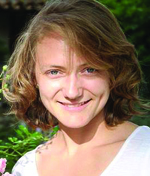 Katrina Andrews
Katrina Andrews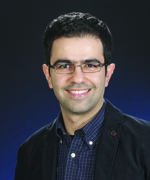 Reza Asadollahi
Reza Asadollahi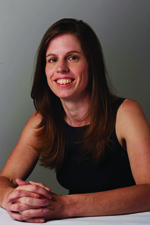 Tracy Briggs
Tracy Briggs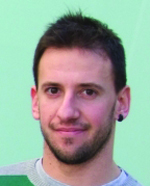 Eduardo Calpena
Eduardo Calpena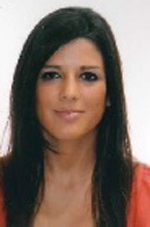 Azahara Civera-Tregón
Azahara Civera-Tregón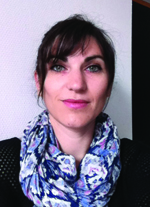 Estelle Colin
Estelle Colin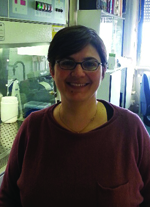 Viviana Cordeddu
Viviana Cordeddu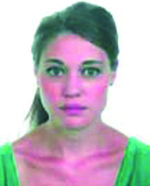 Francesca Cristofoli
Francesca Cristofoli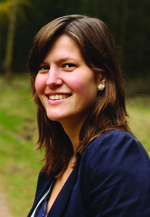 Mirjam de Pagter
Mirjam de Pagter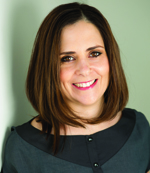 Cristina Dias
Cristina Dias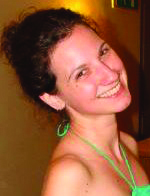 Eftychia Dimitriadou
Eftychia Dimitriadou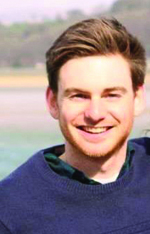 Jamie Ellingford
Jamie Ellingford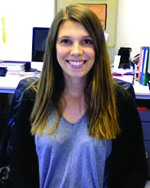 Claire Guissart
Claire Guissart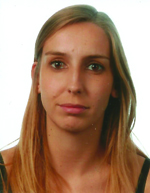 Dorien Haesen
Dorien Haesen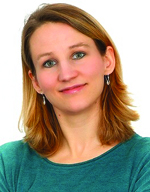 Andrea Hofmann
Andrea Hofmann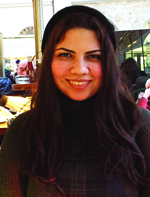 Maral Jamshidi
Maral Jamshidi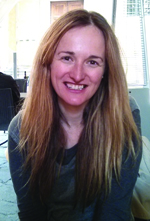 Wendy Jones
Wendy Jones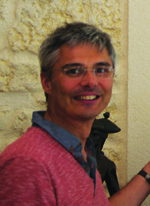 Peter Joshi
Peter Joshi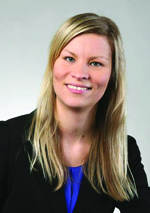 Marika Kaakinen
Marika Kaakinen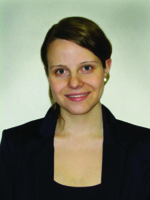 Maria Keller
Maria Keller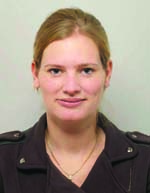 Sietske Kevelam
Sietske Kevelam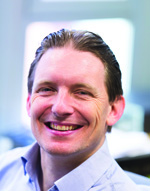 Steven Laurie
Steven Laurie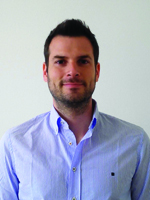 Darío Lupiáñez
Darío Lupiáñez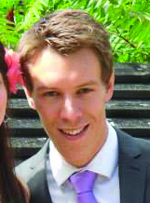 Mike Nahorski
Mike Nahorski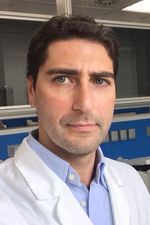 Marcello Niceta
Marcello Niceta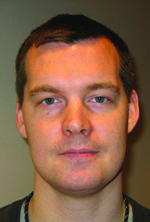 Asmundur Oddsson
Asmundur Oddsson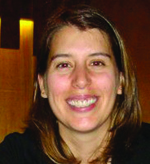 Patricia Oliveira
Patricia Oliveira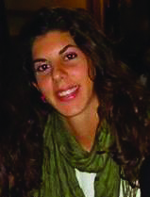 Agnese Padula
Agnese Padula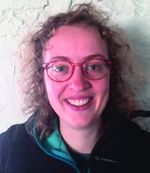 Margot Reijnders
Margot Reijnders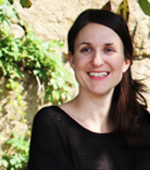 Eva Reinthaler
Eva Reinthaler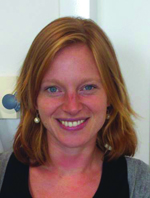 Julie Rutten
Julie Rutten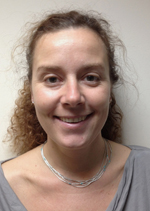 Miriam Schmidts
Miriam Schmidts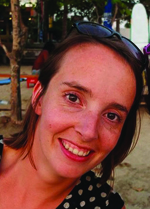 Lot Snijders Blok
Lot Snijders Blok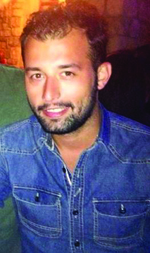 Georgios Stamoulis
Georgios Stamoulis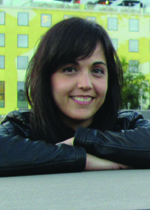 Laura Tomas Roca
Laura Tomas Roca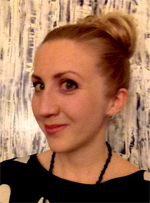 Taru Tukiainen
Taru Tukiainen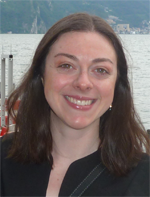 Danya Vears
Danya Vears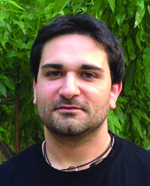 Sergi Villatoro
Sergi Villatoro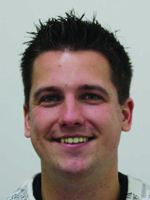 Robbert Weren
Robbert Weren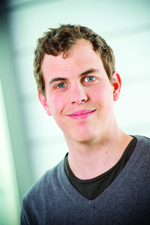 Thomas Wieland
Thomas Wieland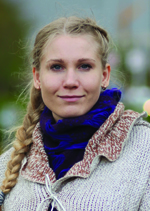 Alena Zablotskaya
Alena Zablotskaya